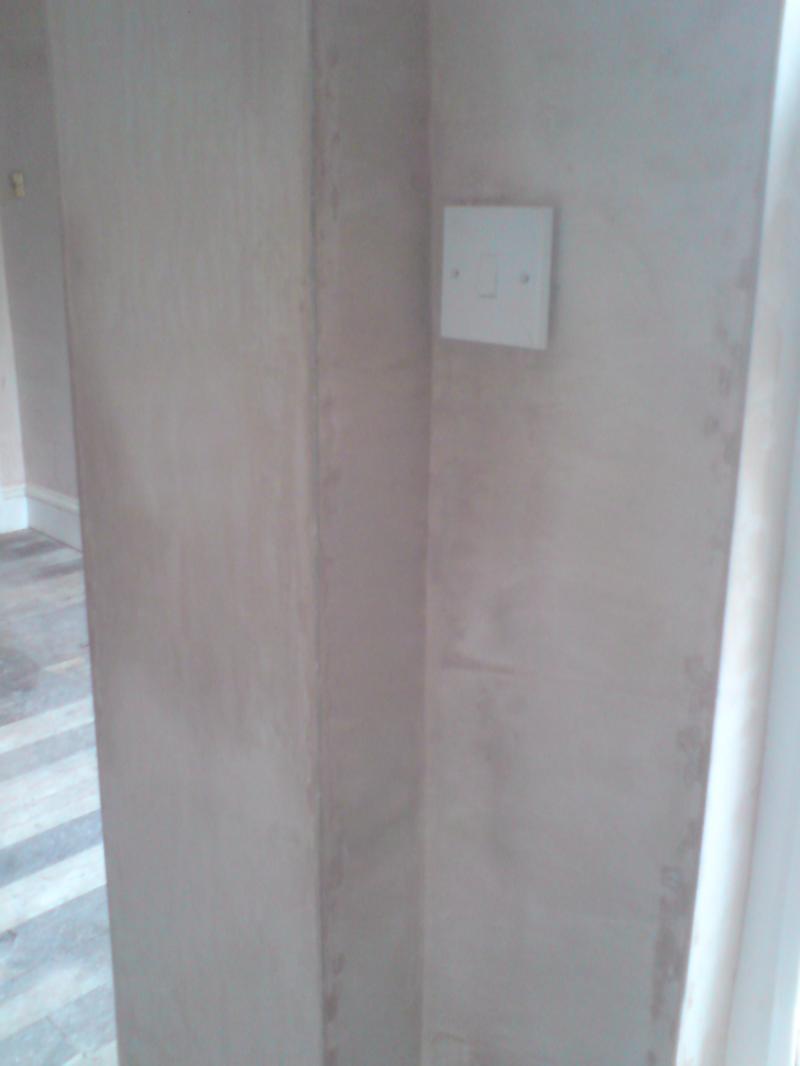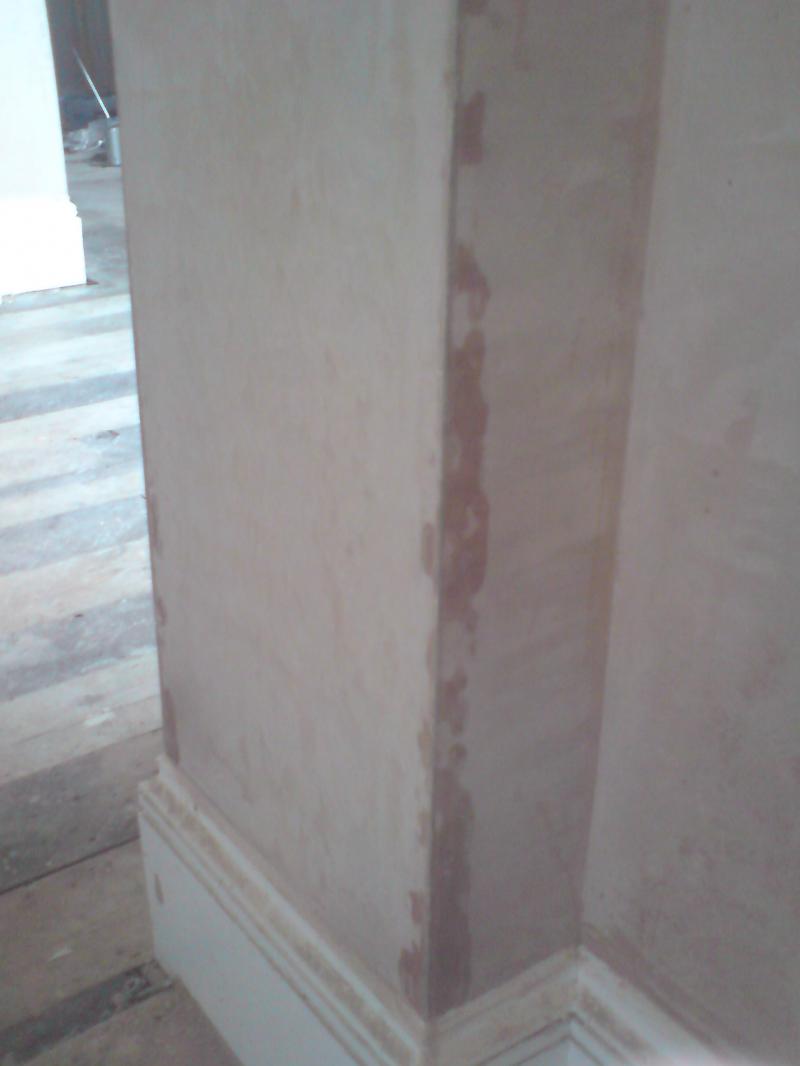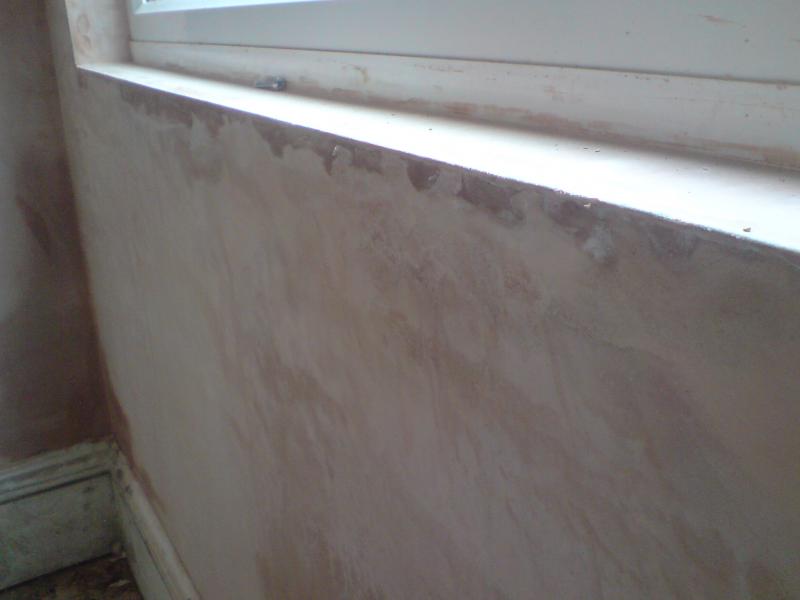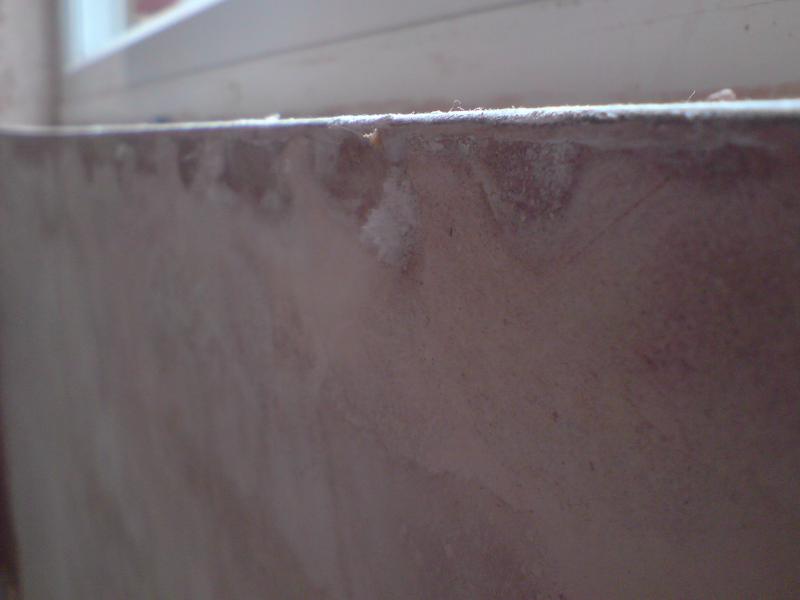Hi, I am currently replastering a large ground floor flat and have had some efflorescence come up in the first area i plastered but only along a few of the angle beads and am at a loss to explain it so thought i'd bring it to the experts, i've been using the site for reference for a while but this is my first post.
Ive been plastering for about 6 years, on my own for half of that and this is the first time ive had anything like this called to my attention so im pretty confident its not due to bad practice on my part but as my training and first 3 years work was almost exclusively on new builds, damp issues are something im having to find out about myself as they come up and this has me stumped, so i would apreciate any thoughts/feedback.
Walls were sealed with PVA, and beads fixed with bonding, quite thick in places to level it out as the top half the room had been artexed, but nothing too excessive. it was then given another coat of pva and over skimmed with multi a couple of days later.
The first area it came up was under a new window where the sill had first been patched up with sand & cement but the second area is away from the window and had nothing done to it except the method described in the previous paragraph. there were no visable damp problems in this area of the property prior to my start and it looked like it was treated for rising damp at some point in last ten years or so though the property had been sat empty for over a year before the renevations began.
Sorry thats a bit of an essay, wasnt sure what info would be usefull so put everything!!
Ive been plastering for about 6 years, on my own for half of that and this is the first time ive had anything like this called to my attention so im pretty confident its not due to bad practice on my part but as my training and first 3 years work was almost exclusively on new builds, damp issues are something im having to find out about myself as they come up and this has me stumped, so i would apreciate any thoughts/feedback.
Walls were sealed with PVA, and beads fixed with bonding, quite thick in places to level it out as the top half the room had been artexed, but nothing too excessive. it was then given another coat of pva and over skimmed with multi a couple of days later.
The first area it came up was under a new window where the sill had first been patched up with sand & cement but the second area is away from the window and had nothing done to it except the method described in the previous paragraph. there were no visable damp problems in this area of the property prior to my start and it looked like it was treated for rising damp at some point in last ten years or so though the property had been sat empty for over a year before the renevations began.
Sorry thats a bit of an essay, wasnt sure what info would be usefull so put everything!!





